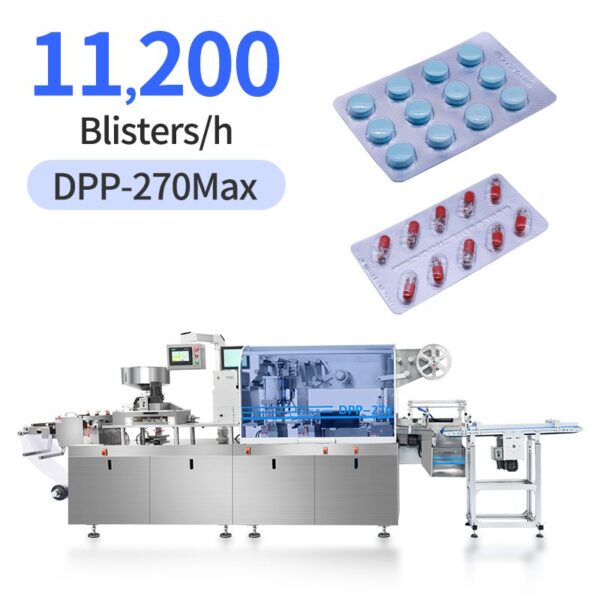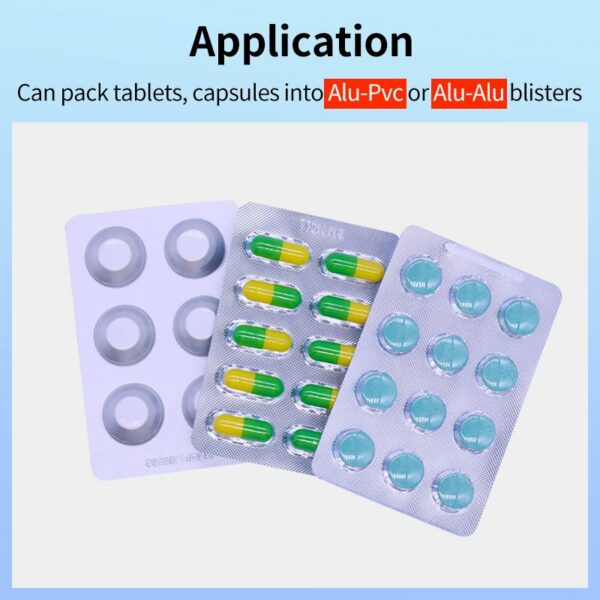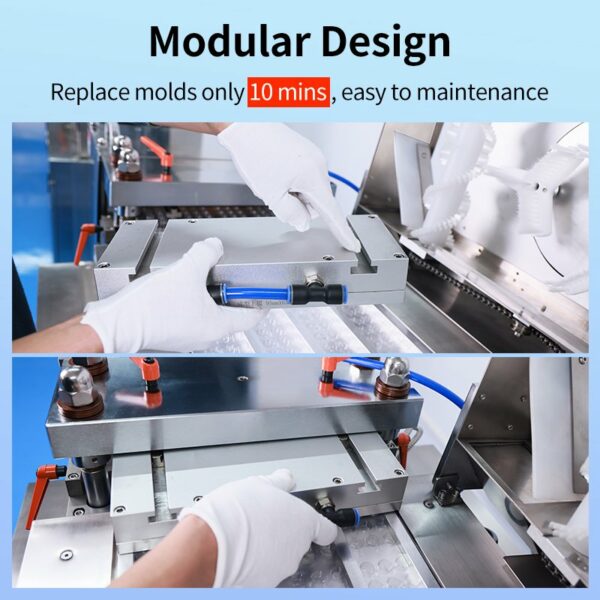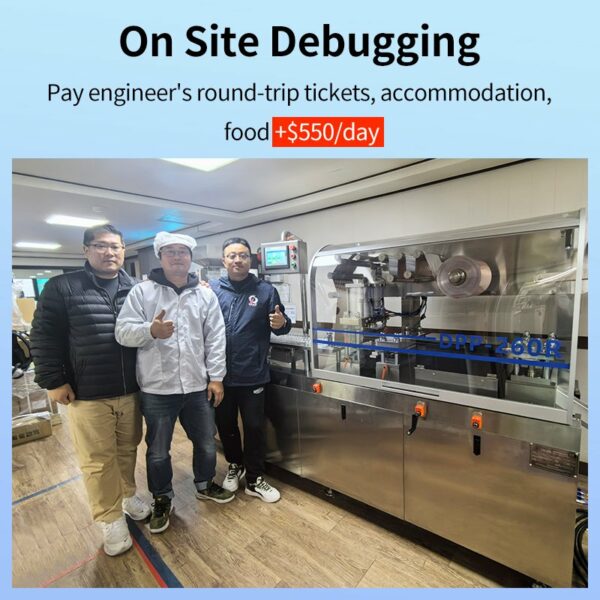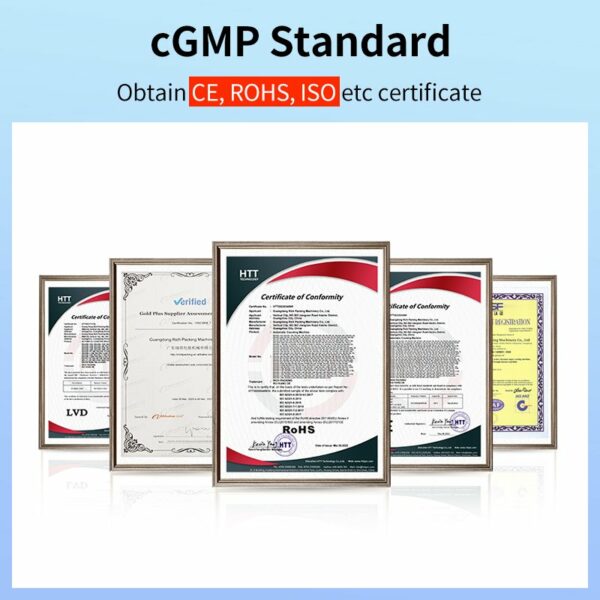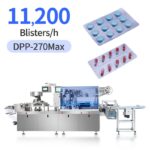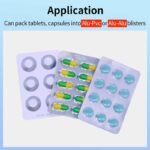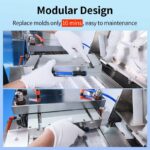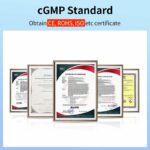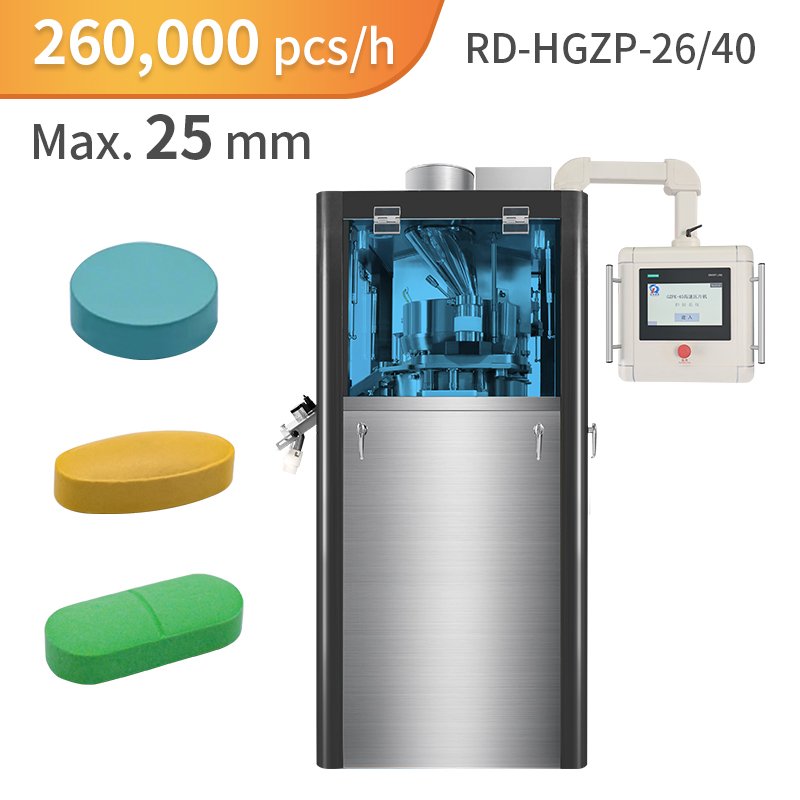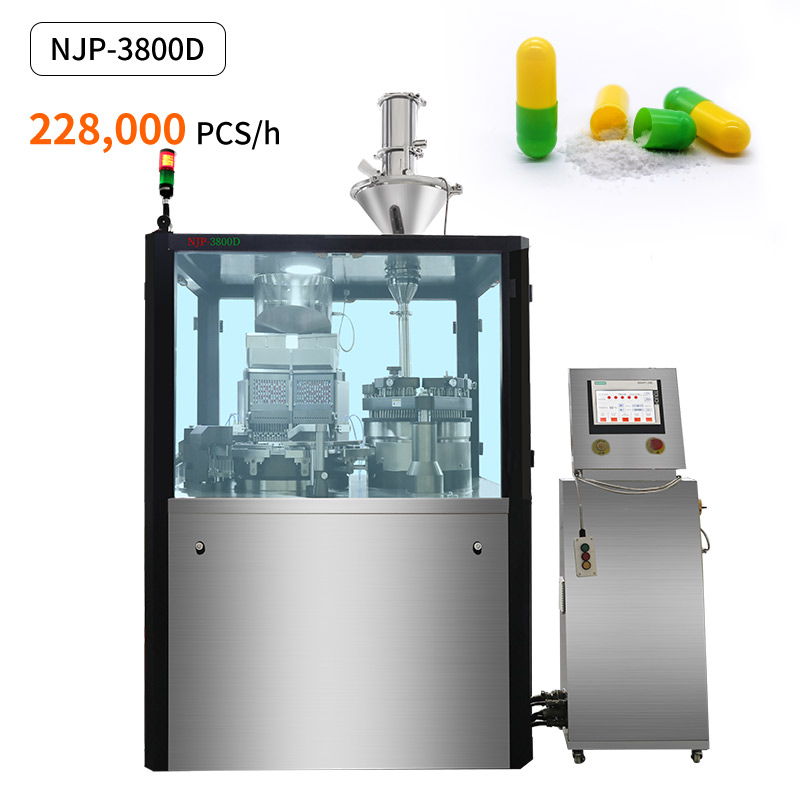Selecting the ideal tablet capsule blister packaging machine is crucial for efficiency, product safety, and your bottom line. Here’s a breakdown of the key factors to consider:
If you want to buy a suitable blister packing machine for tablet capsule, first you need to know what you want to pack, generally it is tablets, capsules, liquids (ketchup, honey, perfume and so on), e-cigarettes, etc., and secondly you need to know the blister size, output, budget and plant area. According to these factors, you can choose the equipment that suits you.
1. Product Type & Characteristics
Pharmaceuticals (Tablets & Capsules): Ensure the machine is cGMP-compliant, offers gentle product handling to prevent breakage, and provides precise cavity filling. Material compatibility for specific drug stability needs is paramount.
Liquids(Eye Drops, Ointments): Requires specialized liquid filling systems integrated with the blister line (peristaltic pump, ceramic pump, plunger pump). Critical factors include precise dosing accuracy, leak-proof sealing, and compatibility with viscous products. The forming process must create deep, robust cavities.
Electronic Cartridges/Vape Components: Demands high-precision placement for small, sometimes fragile items. Leak-proof sealing, cleanability and material traceability might be important.
Different products require different feeders. For example, for tablets and capsules, you can choose brushes, guide rails, or vibrating feeders. If it is a liquid with good fluidity, such as perfume, you can choose a peristaltic pump. Sauce products can only choose a plunger pump. If you want high precision, you can choose a ceramic pump, but the corresponding price will be higher.
2. Blister Size & Format
Blister Dimensions & Depth: The machine must accommodate the maximum length, width, and depth of your largest blister cavity. Measure your product and required headspace.
Blister Plate Size: Determine the overall dimensions of the forming/sealing plates (150x150mm, 200x200mm, larger). This dictates the number of cavities per blister and impacts machine footprint and output.
The size of the blister plate not only affects the mold of the machine, but also directly affects the output of the machine. The standard plate size of the blister plate is 87*50mm, and you can also customize it according to your needs. The following is the maximum width of PVC that can be made by several machines:
| แบบอย่าง |
PVC Max. Width |
| ดีพีพี-90อาร์ |
90 mm |
| ดีพีพี-180โปร |
180 mm |
| DPP-270แม็กซ์ |
270 mm |
3. Required Production Output
Target Units Per Minute/Hour: Calculate your peak and average daily/weekly production needs. Automatic blister machine speeds are typically measured in cycles per minute (CPM) or blisters formed per minute. Remember, actual output depends on changeover times, maintenance, and material feeding efficiency.
Match Machine Capacity: Choose a machine whose proven, sustainable speed meets or slightly exceeds your peak requirements to allow for growth and avoid bottlenecks. Don’t significantly overbuy unless expansion is imminent.
| แบบอย่าง |
เอาท์พุต |
| ดีพีพี-90อาร์ |
2,300 แผลพุพอง/ชม. |
| ดีพีพี-180โปร |
4,800 แผลพุพอง/ชม. |
| DPP-270แม็กซ์ |
11,200 แผลพุพอง/ชม. |
| DPH-270แม็กซ์ |
27,000 แผลพุพอง/ชม. |
4. Available Budget
Initial Investment: Prices vary drastically based on speed, automation level, features, and brand. Define a realistic range. Basic manual/semi-automatic machines are cost-effective for low volumes; high-speed fully automatic lines require major investment.
Total Cost of Ownership (TCO): Factor in operational costs: energy consumption, tooling (forming/sealing dies are significant), spare parts, preventative maintenance contracts, operator training, and material waste rates. A slightly more expensive, robust machine with lower maintenance needs can offer better ROI long-term.
ROI Focus: Prioritize features delivering tangible ROI, like higher speeds reducing labor costs, improved yield (less waste), or flexibility reducing changeover downtime.
5. Factory Space & Layout
Machine Footprint: Precisely measure the length, width, and height of the machine options. Include space for material reels/unwinders and outfeed conveyors or stackers.
Operational Clearance: Allow ample space (typically 1-1.5 meters) around the machine for safe operation, maintenance access, material loading, quality checks, and operator movement. Consider ceiling height for vertical components.
Utilities & Logistics: Ensure the location has the required power supply (voltage, amperage), compressed air connections, and accessibility for material delivery and finished goods removal. Factor in workflow integration with upstream/downstream processes.
In a word, when buying a blister forming packaging machine, you must be clear about your needs and choose a suitable machine according to your needs. It would be even better if you have a sample. You can give us the size of the sample and we will recommend a suitable model to you based on the size of the sample and the packaged product to avoid spending money but not being able to use the machine.
Pro Tip: Consult closely with reputable blister sealing machine manufacturers. Provide detailed samples of your product and packaging materials. Request factory trials whenever possible to test actual performance with your specific application before committing. Choosing wisely ensures optimal efficiency, product protection, and a strong return on your investment.
